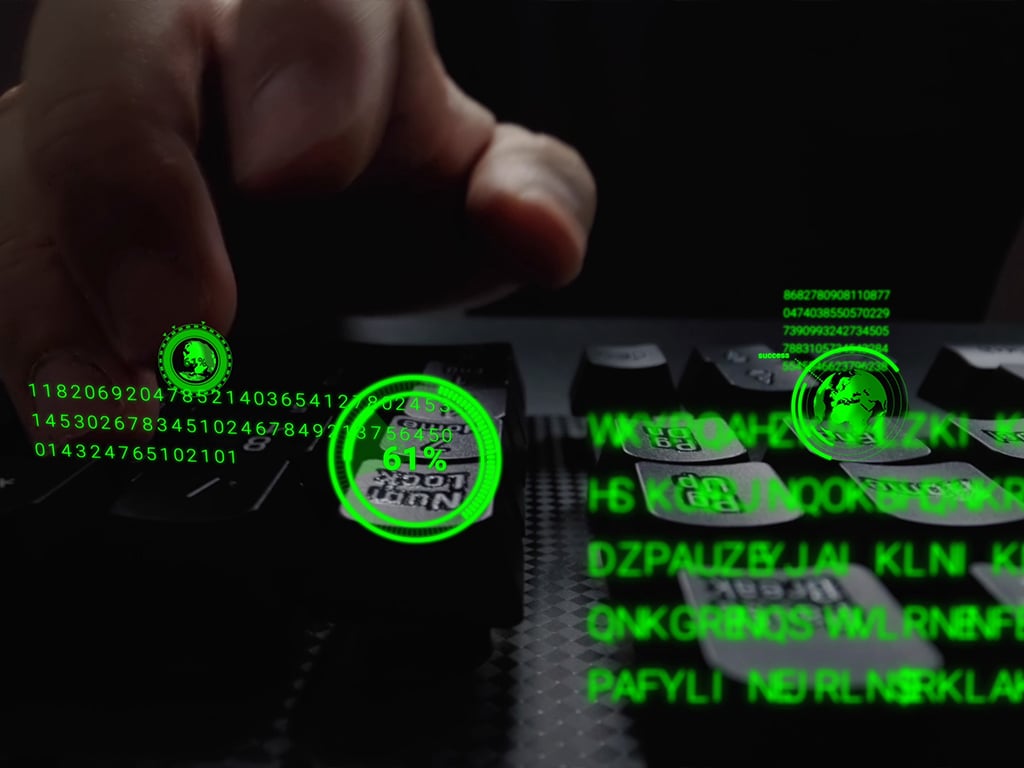Gone are the days of attacks hitting a single product or vulnerability. Today, we’re seeing the increasing use of multi-vector attacks and multi-stage approaches. For example, a DDoS attack in Indonesia used 20 different vectors in a single attack.
We can expect to continue to see an increase in sophistication and evasion from web-based attacks, file-based attacks, DNS-based attacks and ransomware attacks, which will make it more difficult for traditional, siloed security tools to effectively defend against modern threats. Preventing these attacks will require multiple security solutions to work together as part of an integrated platform to stop every attack along the kill chain.
The rise of multi-faceted attacks
Cybercriminals leverage a combination of tactics, techniques and procedures (TTPs), across multiple areas at once to breach defenses. These can include web-based attacks, file-based attacks, DNS-based attacks and ransomware attacks.
Palo Alto Networks researchers have found that new and unique attacks have increased by a factor of four each day – from around 2.3 million in January 2024 to about 8.9 million in January 2025. One example is Relayed Data Exfiltration via HTTP Headers. An attack of this kind leverages siphoning techniques to exfiltrate proprietary business and/or customer data without being detected. Such attacks slowly and quietly steal data, unlike smash-and-grab style attacks meant to exfiltrate as much data as possible before security teams are able to close vulnerabilities.
Here’s what happens: the bad actors use your HTTP headers like an underground tunnel to take data from your network, camouflaging their actions so it looks like typical web traffic. Rather than shipping stolen data straight to the bad actor, small bits of data get inserted into crafty domains and sent to trustworthy internet services. As these services process the domains, they unwittingly forward the stolen data to the bad actor via DNS. Because many security solutions don’t inspect HTTP headers for concealed data exfiltration, it’s easy for bad actors to exfiltrate your data via this technique.
At the same time, AI is enabling malicious actors to carry out faster and more frequent attacks. Attackers will persist in using AI tools to enhance the scale, speed, and complexity of their attacks, aiming to infiltrate systems through any means possible.
A complex defense landscape
In the face of sophisticated threats, enterprises typically have a fragmented defense, with different products responsible for each aspect of the kill chain. This fragmented approach and tool sprawl is complicating cybersecurity efforts. The vast range of new attacks and attack vectors has made it especially difficult for traditional, siloed security tools to defend against modern threats effectively. In fact, the average organization has 83 security solutions purchased from 29 vendors; 52% of executives say that complexity of this kind is the single largest barrier to more effective security. Defense has become too complicated, too expensive, and too mistake-prone – every mistake is now costlier than ever.
An integrated approach
Security can’t exist in silos; as more attack vectors are created, organizations need an approach that protects their dynamic attack surface from ever evolving threats, in an operationally efficient way. Enter platformization. Platformization converges multiple products and services into a single, united architecture. There is one datastore and one management plane for simplified operations, and every module is natively and seamlessly integrated with the others.
An increasingly important value of platformization is how it makes it easy to add new components that keep up with the latest challenges. For example, with a single platform, it is easy to add technologies such as Quantum Security, security for AI, AI copilots, secure browsers and AI-driven threat detection and response. These tools will protect corporate networks from current threats and be prepared to address future threats as well.
However, for platformization to perform well, several critical requirements must be met. First, each product or service added to the platform needs to be as good as or better than its equivalent point product available on the market. Second, it needs to be modular, which allows your company to grow into the use of the platform over time. And third, it needs to empower native platform integrations so that every solution is stronger than it would be by itself.
Done right, platformization offers huge benefits for organizations. According to the IBM Institute for Business Value, organizations using a platform approach require, on average, 72 fewer days to detect a security incident. They also require 84 fewer days to contain an incident. These companies also see an average rate of return of 101%, as opposed to 28% ROI for companies without platformization.
Platformization : Your key to cybersecurity success
Today’s cyberattacks are multifaceted and complex, requiring modern organizations to respond with a multifaceted defense approach. But that approach shouldn’t compound the complexity they’re already experiencing. Platformization helps companies converge and optimize their many security solutions into one powerhouse protection strategy. This is not only more secure, but it also triples ROI and significantly reduces the time needed to detect and contain incidents. Platformization is a key method for effectively addressing today’s and tomorrow’s security threats.
About the Author
 Rich Campagna is the senior vice president for network security, Palo Alto Networks largest business, with more than 65,000 customers. His team of expert technologists have delivered Hardware and Software Firewalls, Cloud-native services, and the highly regarded PAN-OS operating system. These platforms consistently rank #1 in market share and have been recognized as Leaders in the Gartner Magic Quadrant for Firewalls for 12 consecutive years. He is a dynamic leader that is passionate about building high performing teams that innovate and execute to establish strong differentiation and leadership in the market. Rich is a holder of several U.S patents, has co-authored 2 books on network security, and has won numerous nationally recog
Rich Campagna is the senior vice president for network security, Palo Alto Networks largest business, with more than 65,000 customers. His team of expert technologists have delivered Hardware and Software Firewalls, Cloud-native services, and the highly regarded PAN-OS operating system. These platforms consistently rank #1 in market share and have been recognized as Leaders in the Gartner Magic Quadrant for Firewalls for 12 consecutive years. He is a dynamic leader that is passionate about building high performing teams that innovate and execute to establish strong differentiation and leadership in the market. Rich is a holder of several U.S patents, has co-authored 2 books on network security, and has won numerous nationally recog

